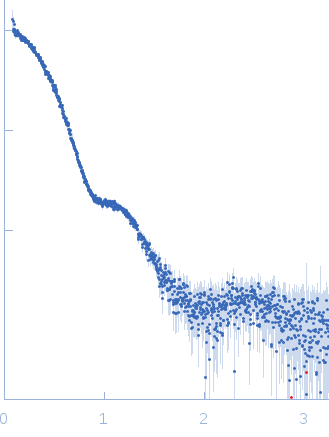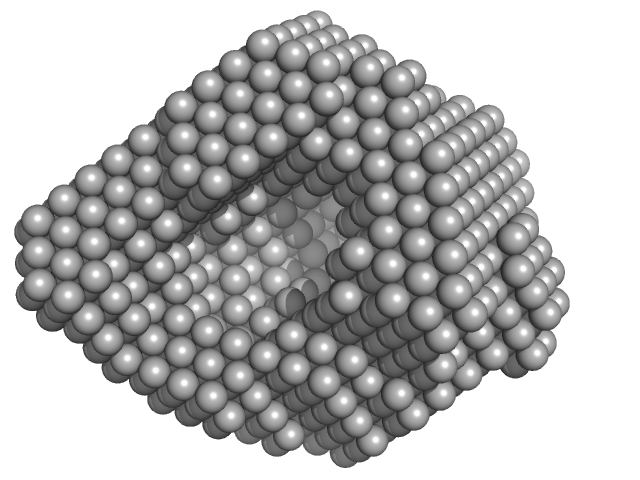|
Synchrotron SAXS
data from solutions of
PlaB
in
100 mM Tris 100 mM Nacl, pH 7.5
were collected
on the
EMBL P12 beam line
at the PETRA III storage ring
(DESY; Hamburg, Germany)
using a Pilatus 2M detector
at a sample-detector distance of 3.1 m and
at a wavelength of λ = 0.12 nm
(I(s) vs s, where s = 4πsinθ/λ, and 2θ is the scattering angle).
Solute concentrations ranging between 0.1 and 4.5 mg/ml were measured
.
160 successive
1 second frames were collected.
The data were normalized to the intensity of the transmitted beam and radially averaged; the scattering of the solvent-blank was subtracted.
The low angle data collected at lower concentration were merged with the highest concentration high angle data to yield the final composite scattering curve.
Cell temperature = UNKNOWN. Storage temperature = UNKNOWN
|
|
PlaB
|
| Mol. type |
|
Protein |
| Organism |
|
Legionella pneumophila |
| Olig. state |
|
Tetramer |
| Mon. MW |
|
55 kDa |
|
 s, nm-1
s, nm-1
